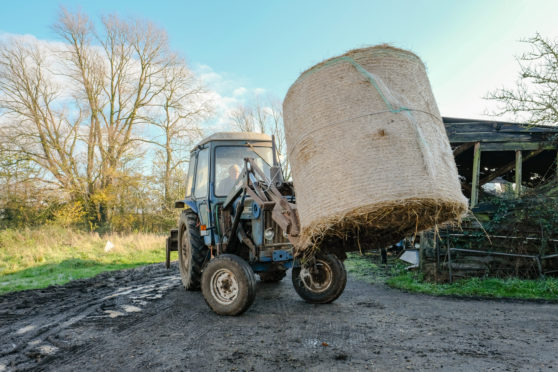If you scanned the telly schedules earlier this week you would be forgiven for thinking farming had suddenly become fashionable.
Unfortunately, most of it didn’t make for savoury viewing.
On one night alone the options included Meat the Family, a series where families challenge their meat-eating habits by looking after farm animals at home; White House Farm, which relived a multiple murder; and Apocalypse Cow, evangelical environmentalist George Monbiot’s condemnation of all meat production as bad for the planet.
Monbiot’s whimsical solution is to replace beef, pork, lamb and chicken with a “cultured” alternative –laboratory-grown meat. He claimed this approach would free up the countryside to plant trees which are, in his eyes, the world’s sole environmental salvation.
There must have been thousands of farmers shouting at their TV screens about grassland’s ability to capture and store carbon, because the English NFU spokeswoman – there to provide the “balance” – certainly wasn’t up to the job.
An occasional glance at Twitter during the programme confirmed the industry’s collective blood pressure was rising as animal rights and vegan groups jumped on the bandwagon, although some people commented their favourite bits of the hour were the regular close-ups of cows’ noses!
The programme created more of a stir than worthier debates at the Oxford Farming Conference, a venue the Environment Secretary Theresa Villiers used to give vague assurances about protecting high food standards when the UK seeks trade deals after Brexit.
A day later she told BBC’s Countryfile programme that the ban on hormone-treated beef and chlorine-washed chicken would remain in place in future trade deals.
It’s a welcome, albeit long overdue, statement.
My series of reports from the Midwest this week gave a flavour of the differences in production methods between the UK and the States, so if the government holds to its promise not to dilute our high standards of food safety and animal welfare, the Villiers commitment is a major step forward – but we need to get it nailed down in legislation.
The visit to Illinois and Wisconsin – just one of many trips organised and paid for by the Trump administration as trade talks and deals between the UK and the United States become more imminent – was billed by the State Department as an opportunity to “dispel the myths” by taking us to farms, scientific laboratories, a national food show and food companies.
I was sceptical, but the tour made no attempt to hide any of the fundamental differences in production methods. We watched beef farmers implant cattle with hormones and heard about lower levels of traceability; cereals producers extolled the benefits of using GMO soybeans but worried about public opinion; and dairy cows with docked tails were milked while we interviewed dairy farmers.
Mind you, despite making requests in advance, we didn’t get access to poultry or pig farms, and I didn’t see any chlorine-washing of chicken.
But while most of these differences in farming methods are well documented, the similarities between those who work on the land across both nations now seem just as significant.
American farming families work as hard and share many of the same challenges as their counterparts here, and they too are under pressure to reduce their industry’s greenhouse gas emissions and to cut back on the use of antibiotics in livestock.
Their margins are tight and they face escalating criticism and misinformation from the anti-meat lobby. And on top of that, America’s crippling trade war with China means that even with state compensation, they’re fighting for survival.
Far from being fashionable, farmers on both sides of the Atlantic are blinking in the headlights of unprecedented hostility from armchair experts who have never been hungry in their lives.
If environmentalists, governments and the general public really care about their future food supply, they must ensure resources are urgently committed to finding workable solutions to agriculture’s role in mitigating climate change.
Relentlessly being cast as the bad guys is taking its toll on this industry.
nnicolson@thecourier.co.uk







